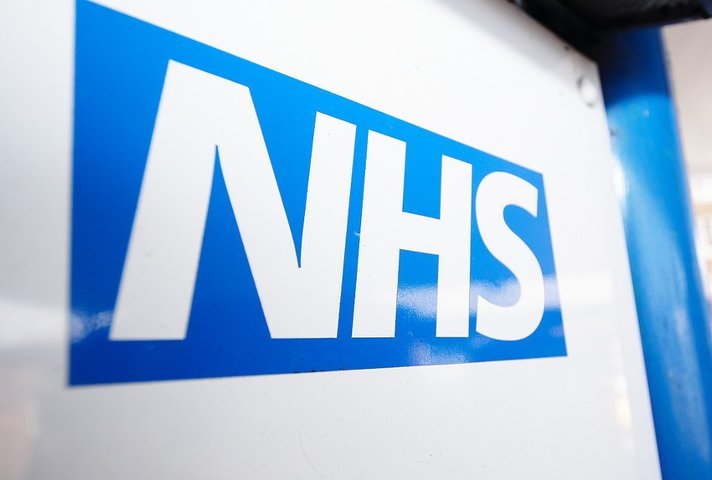The Greater Manchester Health and Social Care Partnership’s chief digital officer talks PublicTechnology through the organisation’s work to drive standardisation and consistency across the NHS and local government
Credit: Ordnance Survey/Crown Copyright
“Whether we like it or not, cloud is coming,” says Stephen Dobson, interim chief digital officer at Greater Manchester Health and Social Care (GMHSC) Partnership.
The “we” in this case covers 10 local councils, 10 clinical commission groups, and 13 foundation and community trusts, as well as representation from NHS Improvement, NHS England, the emergency services, the mayor’s office, and various representatives of the third and voluntary sectors.
Among this wide and diverse array of entities that constitute the partnership, some will, inevitably, like it more than others.
To better understand the existing technology set-up of all of these stakeholders – the state of which is a likely predictor of each organisation’s appetite for cloud – GMHSC is currently conducting an audit of its IT assets and a mapping exercise for existing infrastructure. The organisation has tasked Mancunian specialist consultancy Shaping Cloud with conducting the audit, and the firm will be working with the partnership and its members over the coming months to develop a plan for what data and programs can be moved to the cloud and how best to do so.
“We just did not know how much hardware or software was out there. We are doing an audit of that capability,” Dobson says.
The ultimate goal of the information-gathering and planning exercise is to come up with a strategy that can deliver consistency across what is currently a patchwork of differing circumstances.
Every month we bring together CIOs across all of our organisations – from GPs to local authorities – as well as CTOs, chief technical architects, and CCIOs
“What I did not want was every single organisation going out and creating a cloud strategy that doesn’t work with other organisations’ cloud strategy,” the digital chief adds. “It is going to take us [up to] a year to go round our organisations and make that assessment.”
The migration plan, which will evolve over time, will need to address both individual organisations’ varying levels of maturity and the need for an overall level of harmony.
“It is [currently] difficult to understand how much we can move into the cloud. It is right for certain use cases, [but] it is going to be an ongoing process for several years,” according to Dobson. “Some are really ready to go [to cloud], others are putting it off.”
The benefits of the cloud will be felt in terms of “efficiencies, costs, and capabilities”, he adds.
Theory of devolution
GMHSC came into being in 2016, taking responsibility for devolved powers over NHS and social care spending and decision making that were agreed with the government the prior year – an agreement popularly referred to as ‘Devo Manc’. The following year saw Andy Burnham become the region’s first ever directly elected mayor. He now heads up the Greater Manchester Combined Authority.
The asset audit and creation of a partnership-wide cloud strategy is part of a wider drive to implement a single overarching technology strategy across GMHSC.
This strategy will be built around five core principles: connect; integrate; collaborate; empower; and understand.
The first of these, connect, involves the extension of a WiFi network to cover all NHS and social care organisations in the region, as well as making sure the requisite computing and comms infrastructure is in place.
The integrate phase will see the digitisation of patient data, the establishment of shared electronic records covering all relevant health and social care information concerning a patient, and the implementation of standards and governance practices across Greater Manchester.
“It is about making sure information flows right across the system,” Dobson says. “There are siloes right across the NHS. It can be difficult to get that wholesale picture of what is happening.”
He adds: “We have to make sure we are working with NHS Digital and NHS England to make sure that data is standardised.”
The collaborate programme will be centred on merging teams for certain functions and better sharing of resources across GMHSC’s partners. Another key aspect of this work is joint procurement exercises – a practice that is already underway.
The partnership recently agreed an electronic document transfer contract for the whole of Greater Manchester. Included in the arrangement are all GMHSC partners, as well as dentists, pharmacies, and optometrists across the region.
The deal will see all of these use the Docman document distribution tool used to send a yearly tally of about 500,000 clinical letters, including correspondence to and from GP surgeries, hospitals, mental health services, social care organisations, third-sector entities, and citizens.
GMHSC will look for other technology areas “where it makes sense” to aggregate procurement, Dobson says, potentially including messaging tools.
The ‘empower’ part of the partnership’s plan is concerned with better using tech to benefit patients. This will include the creation of a single portal where citizens across Greater Manchester can access their health and social care data. It will also see increased use of technologies such as messaging and videoconferencing in engagements with patients.
I did not want every single organisation going out and creating a cloud strategy that doesn’t work with other organisations’ cloud strategy
The final part of the strategy, understand will involve collating and analysing joint data sets. The ultimate goal of this work will be to allow the partnership to analyse data in a way that allows more effective planning of the commissioning of services.
While Dobson and his team will be overseeing implementation from the centre, the strategy will be driven forward by technologists from across the individual organisations that constitute the partnership.
“We are a digital team that works collaboratively to implement the strategy,” Dobson says. “Every month we bring together CIOs across all of our organisations – from GPs to local authorities – as well as CTOs, chief technical architects, CCIOs and [others].”
The long-term goal is that the benefits of GMHSC’s strategy will be most keenly felt not by technologists, but by frontline clinicians performing their duties.
Or as Dobson says: “It is about getting the right information at the right time.”
On December 5 in central London, PublicTechnology is hosting a free roundtable event to discuss the challenges and opportunities of cloud migration for the public sector. The discussion – which will feature a range of experts from across local and central government, the NHS, education, and law enforcement – will cover the potential benefits and drawbacks of moving to cloud, as well as best practice and insights gained from migration projects. Places are limited, so click here for further details, or email roundtables@dodsgroup.com to register your interest in taking part, or to find out more.



